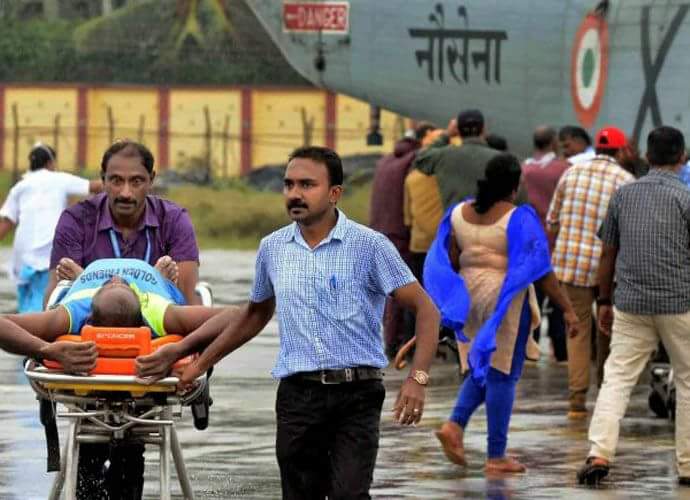The government displays a passive hostility towards environment protection.
In 2004 when I was a schoolgirl, tsunami was an obscure word in my geography textbook and it wasn’t a part of my lexicon despite hailing from coastal Andhra Pradesh. But December 26 that year is entrenched deeply in the flashbulb memory of all those who live along the long coastline of India.
A disaster that literally shook the world – seismologists estimate that the earth vibrated as much as one centimetre – resulted in lakhs of lives being lost.
The following year, the government passed the Disaster Management Act, which established the National Disaster Management Authority (NDMA), with the objective of capacity-building in disaster resiliency and crisis response. It is a nine-member body chaired by the prime minister, with the vice-chairperson being responsible for its day-to-day functioning.
However, the lax attitude of the government towards disaster management is apparent in the fact that key posts including that of the vice-chairperson and secretary have been vacant for the past few years. This lack of leadership is severely impeding the efficiency of the apex agency in disaster response. In response to a PIL, the ministry of home recently stated that there are four members in the NDMA and denied that it suffers a leadership crisis.
However, the aftermath of cyclone Ockhi exposed the inefficiency of the NDMA as there are allegations that adequate attention wasn’t paid to warn coastal communities against venturing into the sea. Post the disaster, fishermen went into the high seas looking for their counterparts beyond 60 nautical miles, where the Coast Guard ended the search operations. Scores of people have died, and many are still missing.
Meanwhile, the central government has refused to declare it a national calamity and pinned the blame for the situation on the state governments, which has angered many communities which bore the brunt of the cyclone.
Worryingly, the NDMA, which created the India Disaster Response Network (IDRN), with the objective of conducting training programmes for vulnerable communities hasn’t executed any such programme over the past two years citing a paucity of manpower. This indicates that the leadership crisis is adversely impacting the functioning of the NDMA, the results of which could cost precious lives during calamities. It would be prudent to focus on empowering the disaster mitigation apparatus in the country in addition to disaster management, given that scientists predict an increase in natural calamities owing to climate change.
Sadly, the government has displayed passive hostility towards environment protection which is cardinal to preventing such calamities. The government often views environment protection as an impediment for doing business. For instance, during Diwali this year, the Delhi BJP unit had attacked the National Green Tribunal (NGT), a quasi-judicial body when it recommended that the sale of firecrackers be banned. Moreover, the Finance Act, 2017, appears to dilute the independence of the NGT.
With calamities becoming increasingly violent and regular, it will be myopic to scorn at measures to protect the environment. Environment should be treated as national wealth and the policies of the government should be in alignment with sustainable and inclusive development.
Unfortunately, public discourse seldom includes environment protection, with the media paying little attention to it. It is often discussed post a disaster and quickly forgotten, until the next major calamity strikes. This explains why construction regulations are flouted with impunity by builders despite the flash floods of Mumbai in 2005 and of Chennai in 2015. While the flashbulb memories of the disasters itself are vivid, the lessons learnt from them are zilch.
It is time the government and political parties introspect to find solutions so that we can balance both development and environment protection. India is the third largest Green House Gases (GHGs) emitter in the world and last year during the Paris Climate Summit, we committed to reducing our emissions intensity by 33-35 per cent by the year 2030.
Given the importance of environment protection and the many international commitments we have to keep, it will require deft policy making (and implementation) to ensure we can attain sustainable development. It will be a tragedy if the government reduces environment awareness to a mere public relations event, without serious action on the ground.
The media could play a constructive role in spreading public awareness on the subject. An informed citizenry will certainly change the government’s attitude towards the environment. Must we wait for another catastrophe of the magnitude of the 2004 tsunami before we are compelled into action? #KhabarLive







